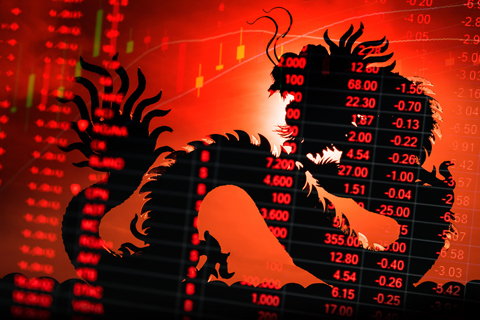Wire and Tube China 2024: Rapidly growing demand for wires, cables, and pipes
by David Fleschen

China, the world's second-largest economy after the United States, continues to be a significant market despite a slowdown in economic growth compared to previous years. With a population of 1.4 billion, China remains a crucial market for wires, wire products such as cables, fasteners, springs, and ropes, as well as pipes. The industry is closely watching the upcoming events, Wire China and Tube China, which will take place from September 25 to 28, 2024.
Wires and cables are essential for transmitting electrical energy and electronic data, while pipes are used for transporting liquids, gases, and bulk materials, as well as in mechanical construction as hollow profiles.
Wires, Cables, and Electrical Lines
According to BIS Research, the Chinese wire and cable market generated over USD 45 billion in revenue in 2022, and it is projected to grow at an average annual growth rate (CAGR) of 7.4%, reaching nearly USD 97 billion by 2032.
Many sectors rely heavily on electricity. In 2023, China consumed approximately 9,220 TWh of electricity, representing a 6.5% increase from the previous year. During the first four months of 2024, electricity demand grew by 7.4% compared to the same period in the previous year.
To meet this rising demand, China has been expanding its electricity generation capacity. From January to July 2024, the country's total installed power capacity increased by 14%, reaching 3.1 TW, driven primarily by the construction of wind and solar power plants.
By the end of July 2024, China had operational nuclear power plants with a total capacity of around 58 GW. In August 2024, the State Council approved five new nuclear projects, adding 11 reactors.
Investment in Power Transmission
Significant amounts of wires and cables are also required for electricity transmission. In 2022, China invested nearly USD 166 billion in expanding and maintaining its power transmission network—more than the combined USD 118 billion spent by all other countries. Over the next six years, China plans to invest more than USD 800 billion to enhance its energy system, especially as the country transitions rapidly to renewable energy sources. Additionally, the grid will need to become "smarter" to manage fluctuating demand and integrate decentralized generation systems like wind turbines and solar panels.
The automotive sector is another significant consumer of wires, cables, and wire products such as fasteners and springs. Automobiles rely on wiring for powering various components, transmitting control signals, and conveying information. Additionally, cars require pipes in the form of hollow profiles for frames, chassis, and powertrains. These hollow profiles, being lighter and stiffer than solid bars, help reduce vehicle weight and balance the heavier batteries in electric vehicles.
In 2023, over 26 million passenger cars were produced in China, nearly one-third of global production. The Chinese automotive industry is expected to experience further growth in 2024.
Pipes and Hollow Profiles
Pipes are just as essential as wires and cables. In the oil and gas industry, pipes are used in upstream operations (Oil Country Tubular Goods or OCTGs), midstream operations for transporting oil, gas, and other substances, and downstream operations for refining processes. According to the Baker Institute, by 2023, China operated more than 100 crude oil pipelines stretching almost 26,000 km, refinery product pipelines spanning nearly 26,000 km, and over 410 natural gas pipelines extending more than 110,000 km. Growing investments in the oil, gas, and chemical industries, along with infrastructure development for water and wastewater management, are driving the pipe market's expansion.
Plastic pipes, particularly those made from PE and PVC, are gaining traction due to their cost-effectiveness, durability, corrosion resistance, and relatively low weight. Bonafide Research estimates that the Chinese plastic pipe market was valued at USD 14.2 billion in 2022, with an expected growth rate (CAGR) of 4.2%, reaching USD 19 billion by 2028.
Source: Messe Düsseldorf, Photo: Fotolia

